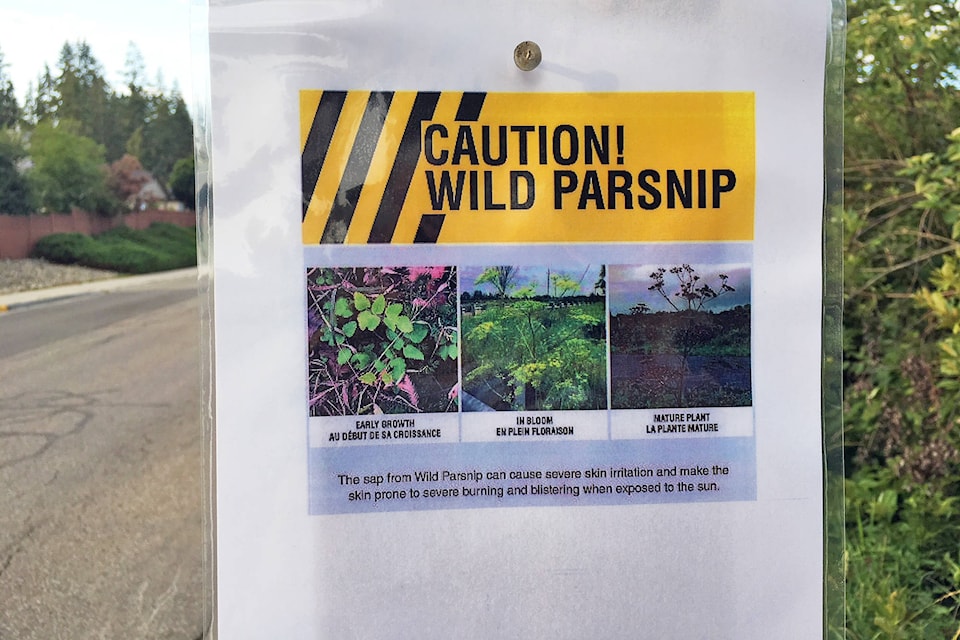Weeds may add glorious colour to trails and fields, but don’t let their beauty fool you.
Some harmless looking plants are toxic and pose a serious threat to humans and animals.
Two prolific weed problems in the Shuswap are wild parsnip and poison hemlock.
The weed looks like a dill plant or Queen Anne’s lace, with yellow flowers. It grows about four feet tall.
According to a Canadian Internet site, www.invadingspecies.com, after handling the fruit, flowers or leaves of wild parsnip, humans can develop dermatitis.
Exposed to sunlight, chemicals in the plant cause inflammation of the skin. Mild cases cause burning sensations and reddening of the skin while severe cases can lead to blistering and extreme burning sensations.
As the open wounds can become infected, anyone who has contact with the plant should shower immediately and stay inside out of the sunlight.
Related: Help stop the spread of invasive plants in the Okanagan-Shuswap
The City of Salmon Arm has posted notices and placed bright pink stanchions at three spots on the Turner Creek Trail between 20th and 24th Street NE to alert users to the presence of the wild parsnip.
Rob Hein, manager of roads and parks, says city crews are not trained to deal with the toxic weed, which is blooming in the same spot as last year.
The city has contacted the Columbia Shuswap Invasive Species Society, who will try to rid the trail of the wild parsnip, just as they did last year.
But Hein says poison hemlock is prolific in parks, fields, ditches, parking lots and more throughout the Shuswap and eradicating it would be impossible.
Related: Pretty but potentially deadly
“It may have been thousands of years ago, but the plant famous for killing Socrates is still around, and still just as dangerous,” notes simplemost.com. “The plant thrives in areas of moist soil and shade and is among the most potently toxic plants people can encounter.”
Poison hemlock grows to be six-10 feet tall with leaves and white flowerheads and is often confused with Queen Anne’s lace. While all parts of hemlock are poisonous, the seeds contain the highest concentration of poison. If ingested by people or animals, symptoms appear within 20 minutes to three hours – dilation of the pupils, dizziness and trembling, slowing heartbeat, paralysis of the central nervous system, muscle paralysis and death due to respiratory failure.
Raven’s Roots Naturalist School offers some advice on telling the difference between the two plants, tips that could save your life if you were to encounter the plant.
Poison hemlock stems are hairless with dark purple spots, while Queen Anne’s lace has hairy stems and no purple.
The flowers on both plants are white and bloom in an umbrella-shaped pattern, but Queen Anne’s lace flowers are flat on top and usually have a single purplish/red flower at the center. Poison hemlock flowers are more rounded, with no colourful flower.
While both have leaves that are fern-like, Queen Anne’s lace’s leaves will have hairs on the undersides. The leaves of poison hemlock are not hairy.
@SalmonArm
barbbrouwer@saobserver.net
Like us on Facebook and follow us on Twitter
